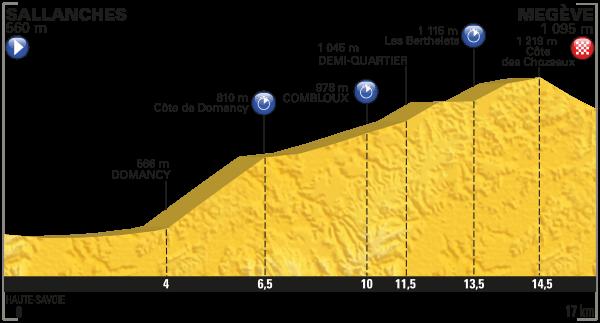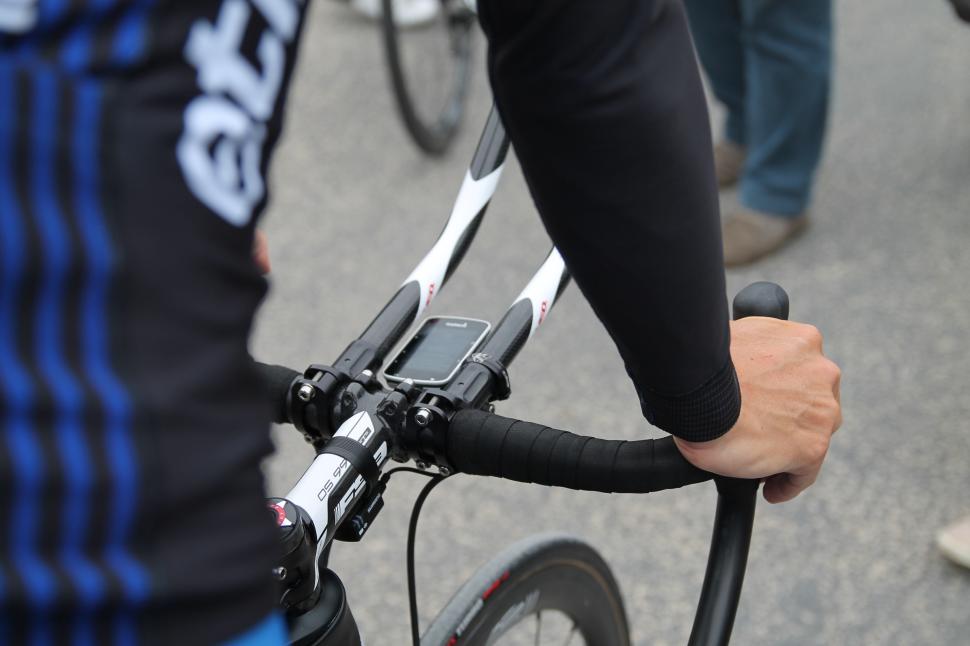- News
- Reviews
- Bikes
- Components
- Bar tape & grips
- Bottom brackets
- Brake & gear cables
- Brake & STI levers
- Brake pads & spares
- Brakes
- Cassettes & freewheels
- Chains
- Chainsets & chainrings
- Derailleurs - front
- Derailleurs - rear
- Forks
- Gear levers & shifters
- Groupsets
- Handlebars & extensions
- Headsets
- Hubs
- Inner tubes
- Pedals
- Quick releases & skewers
- Saddles
- Seatposts
- Stems
- Wheels
- Tyres
- Tubeless valves
- Accessories
- Accessories - misc
- Computer mounts
- Bags
- Bar ends
- Bike bags & cases
- Bottle cages
- Bottles
- Cameras
- Car racks
- Child seats
- Computers
- Glasses
- GPS units
- Helmets
- Lights - front
- Lights - rear
- Lights - sets
- Locks
- Mirrors
- Mudguards
- Racks
- Pumps & CO2 inflators
- Puncture kits
- Reflectives
- Smart watches
- Stands and racks
- Trailers
- Clothing
- Health, fitness and nutrition
- Tools and workshop
- Miscellaneous
- Buyers Guides
- Features
- Forum
- Recommends
- Podcast
TECH NEWS
 PROFIL.png
PROFIL.pngWhy are TdF riders racing a time trial on road bikes?
Today’s 17km mountain time trial from Sallanches to Megève provides an interesting bike and equipment challenge for the Tour de France GC contenders.
Normally for a time trial, a rider will switch from the road bike to a time trial bike with deep section wheels and go full aero. The first time trial of the Tour was run on mostly flat roads and maintaining a very high average speed was the key task, so a time trial bike was an easy choice.
Stage 18 presents an uphill profile with some very steep sections, as much as 14% in places, and 765 metres of vertical gain altogether. With that much climbing on the agenda, factors like weight and ride position become as important as all-out aerodynamics.
As we’ve seen at previous hilly time trials, it looks like the popular choice is a regular road bike with a set of clip-on tri bars, combined with a skinsuit and aero helmet. It provides a lighter setup for the steeper gradients, the extensions a more aero position when the road suits it, and a position that is more familiar for the non-time trial specialists.
Why a road bike with extensions? Weight will be the key factor for most. Modern time trial bikes still carry a substantial weight penalty over a road bike. The Canyon Speedmax I tested last year with a full Dura-Ace groupset weighed in at 8.1kg, a 1.3kg weight penalty. Lighter wheels will help to bring that weight down a bit, so swapping the usual disc rear wheel and deep section front wheel for some climbing wheels could be one option.
Climbing on a time trial bike isn’t easy unless you practice. Holding a tucked position is tough on the flat, let alone on a climb, and some riders will prefer to ride a climb out of the saddle, not something you can do on a time trial bike. To make a time trial bike choice work, the rider will need to be able to ride in the aero position. Which won’t be easy on the steeper sections.
Watching the Tour now, we’re seeing a variety of equipment choices. It’s clear lower placed riders are just riding their regular road bikes and focusing on just getting up the climb without any excessive strain on tired bodies. Higher up the GC though, and the choices get a bit more interesting.
It looks like Dan Martin, a natural climber rather than a time trial specialist, is going with a road bike with clip-on tri bars.
Dan The Man warming up for the individual time trial, which he will start in one hour. #TDF2016 pic.twitter.com/eCipC3f7gN
— Etixx - Quick-Step (@Etixx_QuickStep) July 21, 2016
Tom Dumoulin, winner of the first time trial in the Tour, is a possible stage winner, though the climbing might not suit him, and is riding a Giant time trial bike with shallow section wheels, an interesting combination. It shows he wants the advantage of the aerodynamic bike and the position it provides but has made a sought to reduce the overall weight with the shallower rims.
#TDF2016 We'll be using a mix of TCR & Trinity bikes today. Check out our time trial bike: https://t.co/4nrew1Upxu. pic.twitter.com/klpkti161p
— Team Giant-Alpecin (@GiantAlpecin) July 21, 2016
Some with full TT rig. Giant Alpecin reckon for Dumoulin it's about 10s faster than road bike with TT bars. #TDF2016 pic.twitter.com/sWFsEVavEJ
— Michael Hutchinson (@Doctor_Hutch) July 21, 2016
Another interesting setup is Sylvain Chavanel. He's riding a regular road bike with clip-on tri bars but a disc rear wheel combined with a shallow section front wheel. Pictured below is Wilco Kelderman, who has opted for his road bike with clip-on bars.
And also @W1lcokelderman leaves the start ramp for his time trial! pic.twitter.com/yrgjOoacSF
— LottoNLJumbo Cycling (@LottoJumbo_road) July 21, 2016
We wait to see what Chris Froome will be riding. We know his teammates are riding the regular Dogma F8 road bike with clip-on tri bars, but curiously, Chris Froome tweeted a photo of himself riding his time trial bike on the rest day. Could it be he was prepping it for today's stage? If anyone can maintain the position and power output to get the benefits of the time trial bike on such a stage, it's Froome.
Did you know, only 17 time trials in the history of the race (from 206 individual time trails) have been uphill - the first one was up the Mont Ventoux on 13 July 1958. Ouch!
David worked on the road.cc tech team from 2012-2020. Previously he was editor of Bikemagic.com and before that staff writer at RCUK. He's a seasoned cyclist of all disciplines, from road to mountain biking, touring to cyclo-cross, he only wishes he had time to ride them all. He's mildly competitive, though he'll never admit it, and is a frequent road racer but is too lazy to do really well. He currently resides in the Cotswolds, and you can now find him over on his own YouTube channel David Arthur - Just Ride Bikes.
Latest Comments
- OldRidgeback 1 hour 2 min ago
The sentence does seem rather light. I hope the victim sues the driver heavily and wins a massive payout. The insurance firm would cover this but...
- OldRidgeback 1 hour 7 min ago
I bought my first MTB at Brixton Cycles decades ago and it's still in use as my hack. I've also bought bikes from there for my sons. I've had...
- chrisonabike 1 hour 32 min ago
So what you're saying is the "baseline" would move from "lit up like a Christmas tree" to "like a chameleon at a rave" * ... and it would have...
- Oldfatgit 2 hours 27 min ago
Thank you for asking Aidan, much appreciated....
- ktache 11 hours 27 min ago
And I liked endura too. Got a nice long sleeve mostly merino long sleeve a little while back, in orange.
- matthewn5 11 hours 55 min ago
No, the Ebay lights have been around for several years, this Lezyne light just appeared.
- chrisonabike 12 hours 11 min ago
They shouldn't worry - the second part of the "tariff" refrain is "they can make it in US and they'll do very well".
- Mr Blackbird 12 hours 43 min ago
"At the going down of the sun, it will get in our eyes and cause us to crash into things."
- chrisonabike 17 hours 46 min ago
Indeed - but again these are perhaps questions we should keep asking. Even if the immediate answer is "well we are where we are" or "how on earth...

Add new comment
4 comments
Some riders even opted for their Tarmacs over their Venge Vias which is kind of odd, but I guess that feel, handling and weight still count over aero when this much climbing is involved.
Yeah, I was reading up on yaw earlier. Then I stopped as, well, science.
Related question... How big a benefit does a disc wheel provide?
I've never ridden one, but seeing nearly every rider using one in such windy conditions for the first TT I figured that the benefit must be pretty huge.
Personally I sometimes struggle with my 60mm rims in windy conditions.
but most ran a shallow front wheel. Wing has much less impact on Disc or very deep rear wheel, and bizarrely in certain wind directions can actually provide forward assistance.
next time it's windy, try running your 60mm rear with your shallow front. Might look weird but will provide some decent benefit.